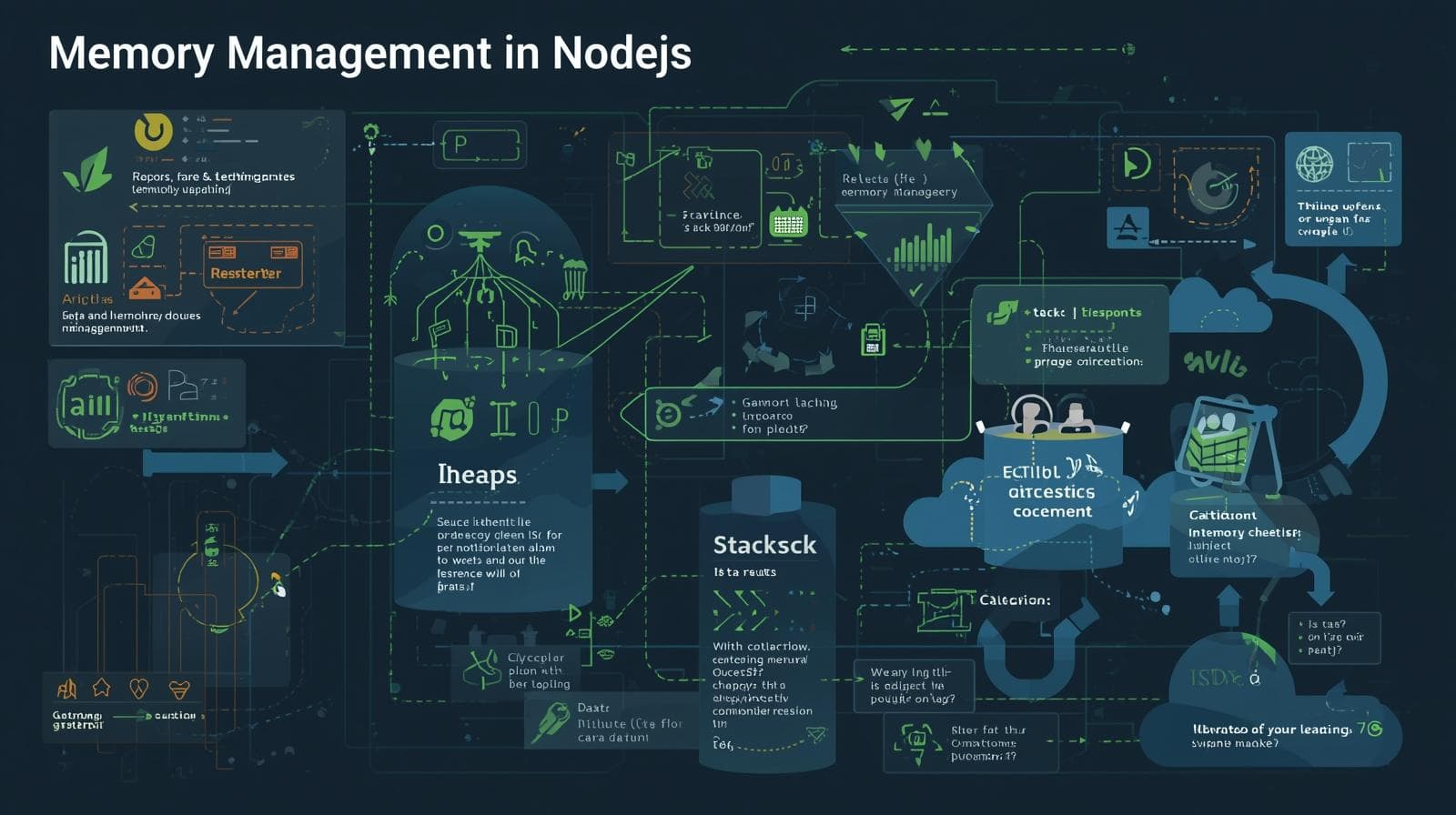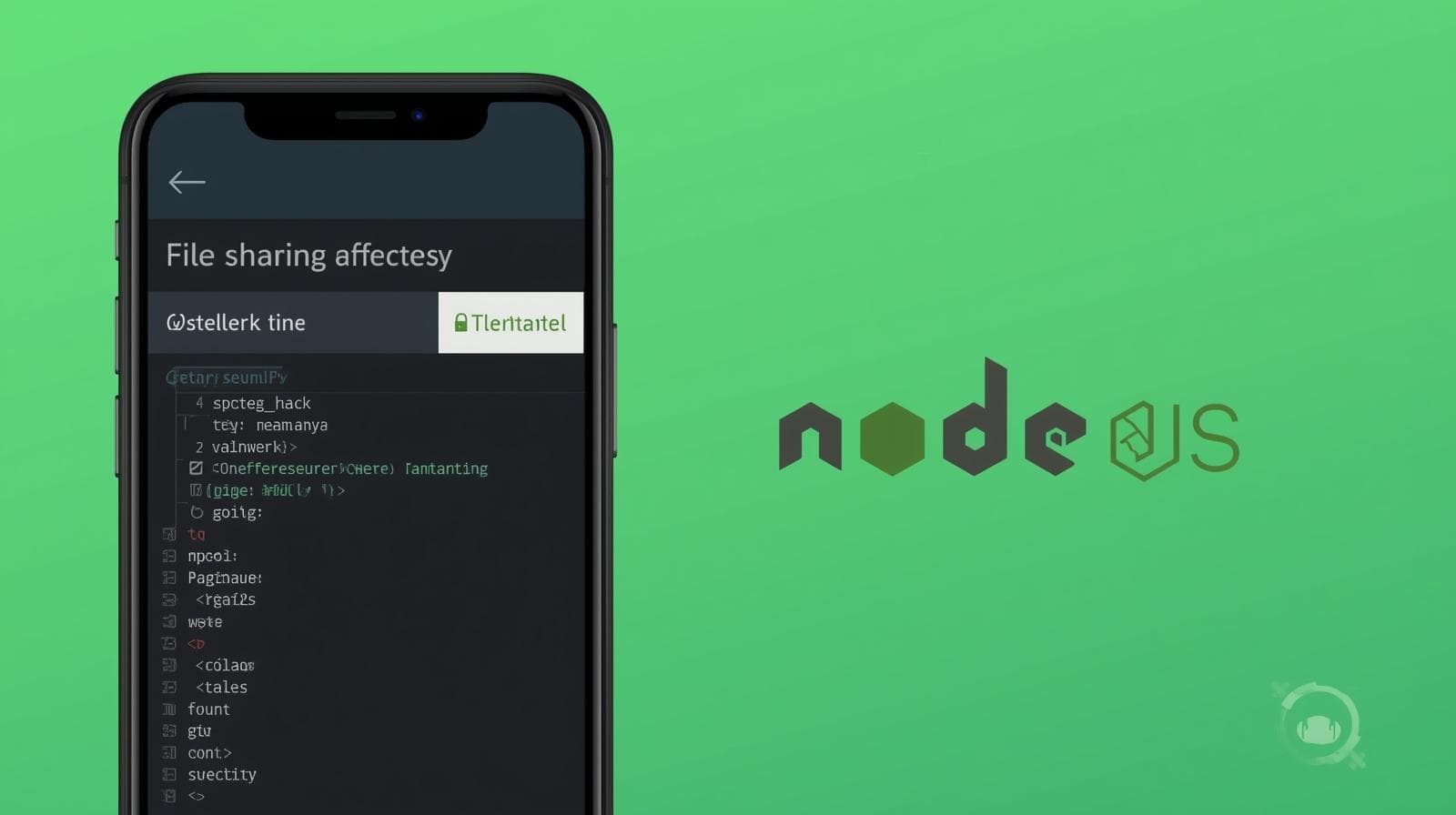Unlock Node.js Performance: A Deep Dive into Worker Threads

s your Node.js app slowed down by heavy tasks? Learn how to use Worker Threads for true multithreading. Includes code examples, use cases, and best practices. Boost your skills with CoderCrafter's professional courses!

Unlock Node.js Performance: A Deep Dive into Worker Threads
Unlock Node.js Performance: A Deep Dive into Worker Threads
For years, Node.js has been the darling of the server-side development world, and for good reason. Its single-threaded, event-driven architecture makes it incredibly efficient for I/O-heavy tasks like serving API requests, talking to databases, or handling real-time web sockets. If you've built a chat application or a standard CRUD API, you've felt this power.
But then, you hit that wall.
You need to resize a thousand images, parse a massive CSV file, or run a complex mathematical calculation. Suddenly, your lightning-fast API grinds to a halt. A single request doing heavy lifting blocks the entire event loop, and every other user has to wait. This is the fundamental challenge of Node.js: it’s single-threaded.
For a long time, the solution was to "fork" processes using the cluster module or offload work to external services. But with Node.js v10.5.0, we got a game-changer native in the toolbox: Worker Threads.
In this comprehensive guide, we're not just going to scratch the surface. We're going to dive deep into what Worker Threads are, how they work, when to use them, and the best practices to follow. By the end, you'll be equipped to tackle CPU-intensive tasks in Node.js with confidence.
To learn professional software development courses such as Python Programming, Full Stack Development, and MERN Stack, visit and enroll today at codercrafter.in.
What Exactly Are Worker Threads? Let's Demystify Them
Before we talk about the "how," let's get the "what" crystal clear.
The Single-Threaded Illusion and the Event Loop
First, a quick recap. JavaScript, and by extension Node.js, is single-threaded. This doesn't mean the entire process has one thread. Under the hood, Node.js uses a library called libuv to handle asynchronous operations (like file I/O or network requests) using a thread pool. However, your JavaScript code—the code you write—runs on a single main thread.
This main thread is managed by the Event Loop, a brilliant orchestrator that picks up tasks from a queue, executes them, and waits for callbacks. It's non-blocking for I/O, but if a task on that main thread takes a long time (like a for loop calculating pi to a billion decimal places), the event loop is stuck. It can't process the next click, the next API call, or the next database response. Your application is "blocked."
Enter Worker Threads
The worker_threads module allows you to run JavaScript in parallel threads. Think of it like this:
Main Thread: The foreman on a construction site. They delegate tasks and manage the overall project.
Worker Threads: The specialized workers (electricians, plumbers, carpenters). They handle the heavy, time-consuming jobs without the foreman having to stop managing the site.
Crucially, each worker thread has its own isolated JavaScript environment (its own V8 instance, Node.js instance, and event loop), its own memory, and his own libuv thread pool. This is the key to achieving true parallelism for CPU-intensive operations.
Worker Threads vs. Child Processes vs. Clustering
This is a common point of confusion.
Child Processes (
child_process): Spawns a completely separate operating system process. Great for running non-Node.js scripts or heavy, independent tasks. High overhead due to separate memory and process creation.Clustering (
cluster): A specialized use ofchild_processto create multiple copies of your server, each listening on the same port, to handle incoming HTTP requests. Perfect for scaling across CPU cores for web servers.Worker Threads (
worker_threads): Spawns new threads within the same process. They can share memory efficiently (viaSharedArrayBuffer) and have a much lower overhead compared to processes. They are designed for offloading specific, heavy computational functions, not for creating entire HTTP servers.
The Bottom Line: Use Worker Threads when you have specific, synchronous, CPU-heavy tasks that are blocking your main event loop.
Your First Worker Thread: A Step-by-Step Example
Enough theory! Let's get our hands dirty with code. We'll solve the classic problem: a blocking Fibonacci sequence calculation.
The Problem: A Blocking Main Thread
First, let's see the problem in action. Here's a simple server with a blocking endpoint.
javascript
// blocking-server.js
const http = require('http');
// A terribly inefficient, blocking Fibonacci function
function fibonacci(n) {
if (n <= 1) return n;
return fibonacci(n - 1) + fibonacci(n - 2);
}
const server = http.createServer((req, res) => {
if (req.url === '/fibonacci') {
const result = fibonacci(45); // This will block for several seconds
res.writeHead(200);
res.end(`Fibonacci Result: ${result}`);
} else {
res.writeHead(200);
res.end('Hello from the main thread!');
}
});
server.listen(3000, () => {
console.log('Server running on http://localhost:3000');
});Run this server. If you open two browser tabs, one for http://localhost:3000/fibonacci and one for http://localhost:3000/, you'll see that the "hello" tab hangs until the Fibonacci calculation is complete. The event loop is blocked!
The Solution: Offloading to a Worker Thread
Let's fix this by moving the heavy fibonacci function to a worker thread.
Step 1: Create the Main Thread File (main.js)
This file will create the server and spawn the worker.
javascript
// main.js
const http = require('http');
const { Worker } = require('worker_threads');
const path = require('path');
const server = http.createServer(async (req, res) => {
if (req.url === '/fibonacci') {
// Create a new worker for each request
const worker = new Worker(path.join(__dirname, 'worker.js'));
// Send data to the worker
worker.postMessage(45);
// Listen for a message from the worker
worker.on('message', (result) => {
res.writeHead(200);
res.end(`Fibonacci Result: ${result}`);
worker.terminate(); // Always terminate the worker when done
});
// Handle errors from the worker
worker.on('error', (err) => {
console.error(err);
res.writeHead(500);
res.end('An error occurred in the worker');
});
} else {
res.writeHead(200);
res.end('Hello from the main thread!');
}
});
server.listen(3000, () => {
console.log('Non-blocking server running on http://localhost:3000');
});Step 2: Create the Worker Thread File (worker.js)
This file contains the code that will run in the separate thread.
javascript
// worker.js
const { parentPort } = require('worker_threads');
// The same blocking function, but now in a worker
function fibonacci(n) {
if (n <= 1) return n;
return fibonacci(n - 1) + fibonacci(n - 2);
}
// Listen for messages from the main thread
parentPort.on('message', (n) => {
// Perform the heavy calculation
const result = fibonacci(n);
// Send the result back to the main thread
parentPort.postMessage(result);
});Now, run node main.js. Open the same two browser tabs. Magic! The http://localhost:3000/ endpoint responds instantly, even while the Fibonacci calculation is running. The main event loop is free to handle other requests.
Real-World Use Cases: Where Worker Threads Shine
Worker Threads aren't an academic curiosity; they solve real problems. Here are some prime examples:
Image/Video Processing: Resizing, applying filters, or generating thumbnails for uploaded images is a classic CPU-bound task. A worker thread can handle this without blocking your web server from responding to other users.
Data Compression and Encryption: Compressing large files or encrypting/decrypting data streams using algorithms like AES are computationally expensive and perfect for workers.
Parsing Large Files (CSV, JSON, XML): When you need to parse a multi-gigabyte log file or a massive CSV dataset, doing it on the main thread is a disaster. Stream the file and send chunks to worker threads for parallel parsing.
Complex Mathematical Calculations and Simulations: Financial modeling, scientific simulations, and machine learning inference (especially with libraries that don't have native async support) can be offloaded.
Data Validation and Sanitization at Scale: If you need to validate a huge batch of records against complex business rules, a pool of worker threads can process them in parallel.
Building these kinds of advanced, high-performance applications requires a deep understanding of Node.js and software architecture. To learn professional software development courses such as Python Programming, Full Stack Development, and MERN Stack, visit and enroll today at codercrafter.in.
Advanced Patterns and Best Practices
Creating a new worker for every task is simple but inefficient. The overhead, while smaller than a process, adds up. Let's talk about production-grade patterns.
1. The Worker Pool Pattern
The most efficient pattern is to create a pool of reusable workers. This avoids the cost of constantly creating and destroying threads.
javascript
// worker-pool.js
const { Worker } = require('worker_threads');
const path = require('path');
class WorkerPool {
constructor(size, workerPath) {
this.size = size;
this.workerPath = workerPath;
this.workers = [];
this.freeWorkers = [];
this.tasks = []; // Queue for tasks
// Initialize workers
for (let i = 0; i < size; i++) {
this.createWorker();
}
}
createWorker() {
const worker = new Worker(this.workerPath);
worker.on('message', (result) => {
// When a worker is done, get its task's resolve function and call it
const { resolve } = worker.currentTask;
resolve(result);
worker.currentTask = null;
this.freeWorkers.push(worker);
this.executeNextTask();
});
worker.on('error', (err) => {
console.error('Worker error:', err);
// Handle error similarly, then recreate the worker
this.freeWorkers.push(this.createWorker());
});
this.workers.push(worker);
this.freeWorkers.push(worker);
}
runTask(data) {
return new Promise((resolve, reject) => {
this.tasks.push({ data, resolve, reject });
this.executeNextTask();
});
}
executeNextTask() {
if (this.tasks.length > 0 && this.freeWorkers.length > 0) {
const task = this.tasks.shift();
const worker = this.freeWorkers.shift();
worker.currentTask = { resolve: task.resolve, reject: task.reject };
worker.postMessage(task.data);
}
}
}
// Use the pool
const pool = new WorkerPool(4, path.join(__dirname, 'worker.js'));
// Instead of `new Worker`, now you do:
// pool.runTask(45).then(result => console.log(result));
module.exports = pool;2. Sharing Memory with SharedArrayBuffer
For extremely high-performance scenarios, you can share memory between threads using SharedArrayBuffer and Atomics. This avoids the serialization cost of postMessage.
Warning: This is an advanced feature and requires careful synchronization to avoid race conditions. You must use the Atomics methods for safe read/write operations.
javascript
// In the main thread
const { Worker } = require('worker_threads');
// Create a SharedArrayBuffer of 4 bytes (enough for a 32-bit integer)
const sharedBuffer = new SharedArrayBuffer(4);
const sharedArray = new Int32Array(sharedBuffer);
const worker = new Worker('./shared-memory-worker.js');
worker.postMessage({ sharedBuffer });
// Wait a bit, then check the value set by the worker
setTimeout(() => {
console.log('Value from worker:', Atomics.load(sharedArray, 0)); // Should be 42
worker.terminate();
}, 1000);javascript
// shared-memory-worker.js
const { parentPort } = require('worker_threads');
parentPort.on('message', ({ sharedBuffer }) => {
const sharedArray = new Int32Array(sharedBuffer);
// Safely write to the shared memory
Atomics.store(sharedArray, 0, 42);
parentPort.postMessage('done');
});3. Best Practices to Live By
Don't Use Workers for I/O: The main thread is already optimized for I/O. Workers are for CPU work. If you do I/O in a worker, you're just moving the problem to a different event loop and adding complexity.
Use a Pool: As demonstrated, a worker pool is essential for handling multiple concurrent heavy tasks efficiently.
Always Handle Errors: Listen for the
'error'event on workers. An unhandled error in a worker can crash the entire process.Terminate Workers: Use
worker.terminate()to clean up workers when you're done with them to free up resources.Profile Before You Optimize: Don't add the complexity of workers prematurely. If your application isn't CPU-bound, you don't need them. Use profiling tools to identify the real bottlenecks.
Frequently Asked Questions (FAQs)
Q1: Can Worker Threads share objects directly?
No. Unlike in some other languages, you cannot directly share regular JavaScript objects between threads. Communication happens via message passing (which involves serialization and deserialization) or via raw binary data using SharedArrayBuffer.
Q2: Do Worker Threads make my code faster?
Not automatically, and not for all tasks. They introduce overhead (communication, thread creation). They only make your application feel faster and more responsive by preventing the main thread from blocking. The total wall-clock time for a single, isolated CPU task might even be slightly higher due to overhead, but the overall throughput and responsiveness of your application will improve dramatically.
Q3: How many Worker Threads should I create?
A good rule of thumb is not to exceed the number of physical CPU cores on your machine for purely CPU-bound tasks. Creating more workers than cores can lead to context switching overhead. The optimal size for a worker pool is often require('os').cpus().length.
Q4: Can I use Worker Threads with frameworks like Express.js?
Absolutely! The examples above used a simple HTTP server, but the concept is identical in an Express route. You would create a worker or use a pool inside your route handler to offload the heavy work.
Q5: Are there any alternatives to the native worker_threads module?
Yes, libraries like Piscina (from the Node.js team themselves) and workerpool provide a higher-level, more feature-complete API for managing worker pools, making them easier to use in production.
Conclusion: Threading the Needle for Performance
Node.js's single-threaded nature is its greatest strength and, for specific problems, its greatest weakness. Worker Threads elegantly bridge this gap, providing a native, powerful way to handle CPU-intensive tasks without sacrificing the non-blocking nature of the main event loop.
We've covered a lot of ground—from the fundamental "why" and a simple "how," to advanced patterns like worker pools and shared memory. Remember, with great power comes great responsibility. Use Worker Threads judiciously, profile your applications, and always follow best practices.
The journey to mastering backend development is filled with concepts like these that can elevate your skills from good to great. If you're looking to solidify your understanding of Node.js, build complex full-stack applications, and master in-demand technologies, our project-based courses are the perfect launchpad. To learn professional software development courses such as Python Programming, Full Stack Development, and MERN Stack, visit and enroll today at codercrafter.in.









